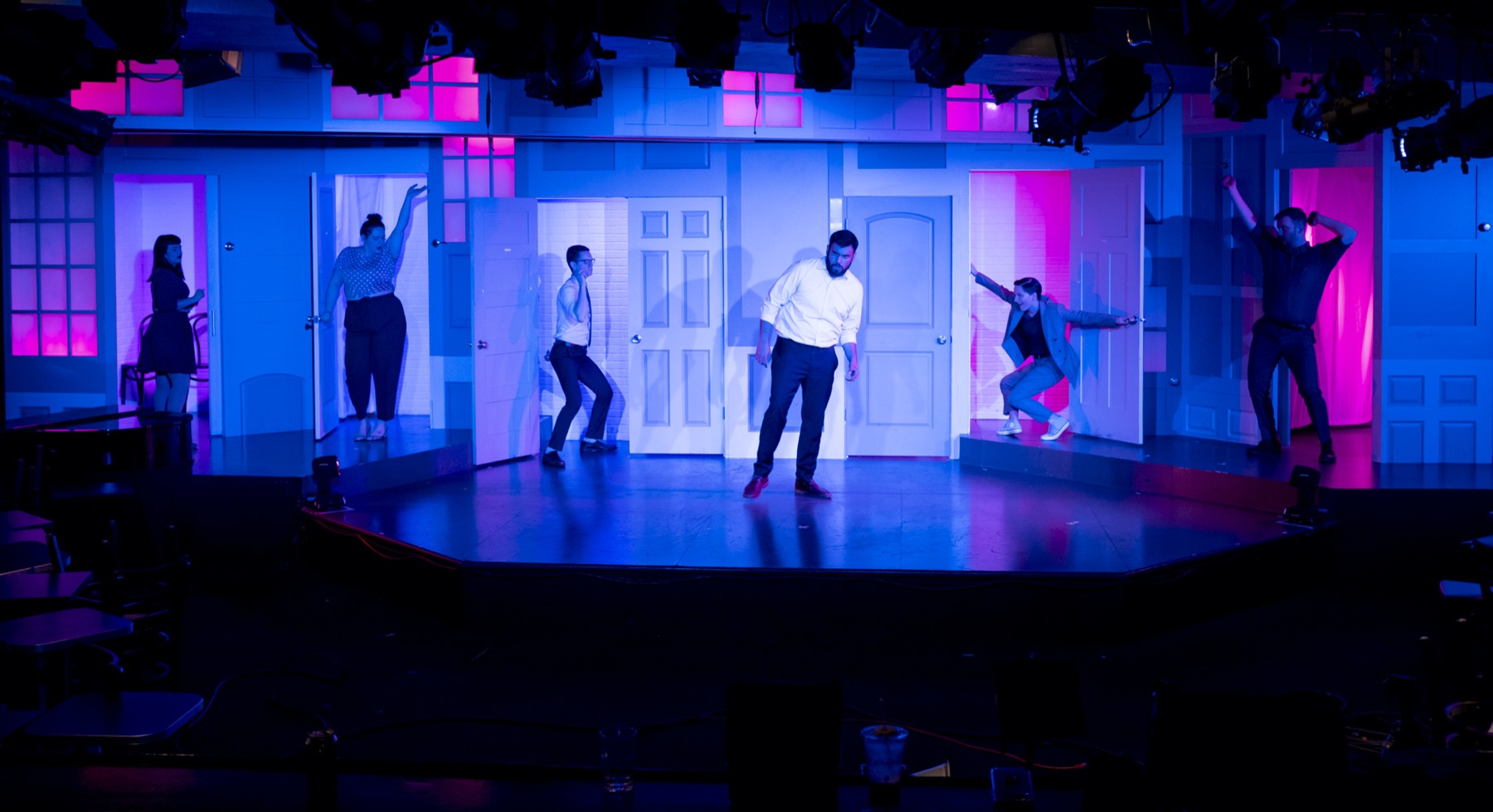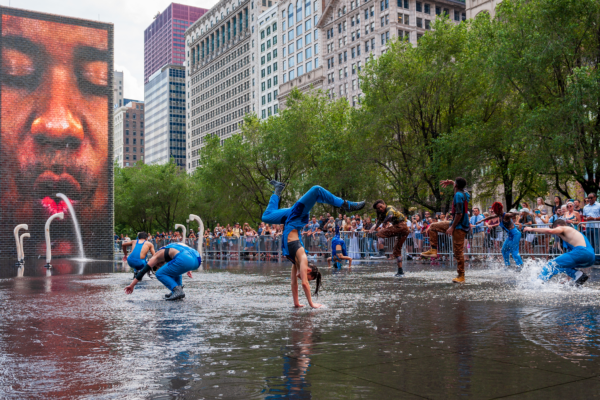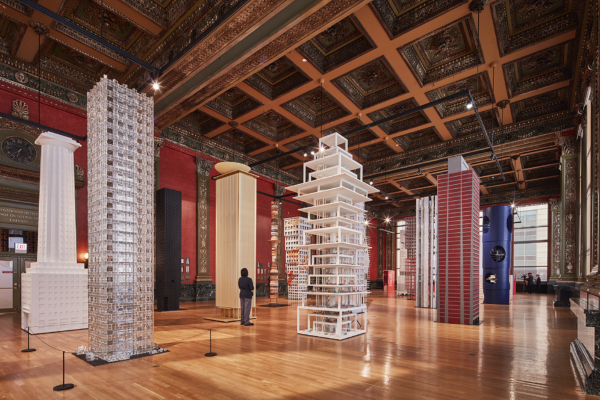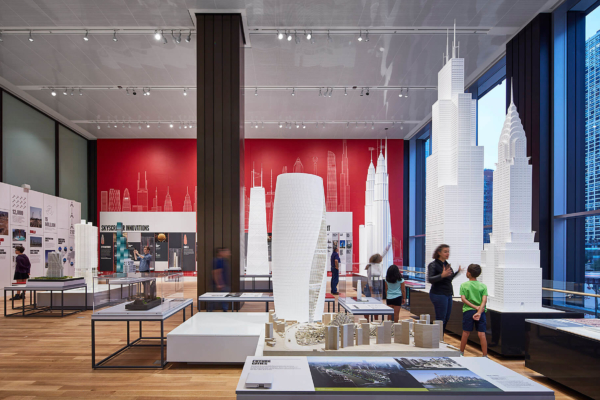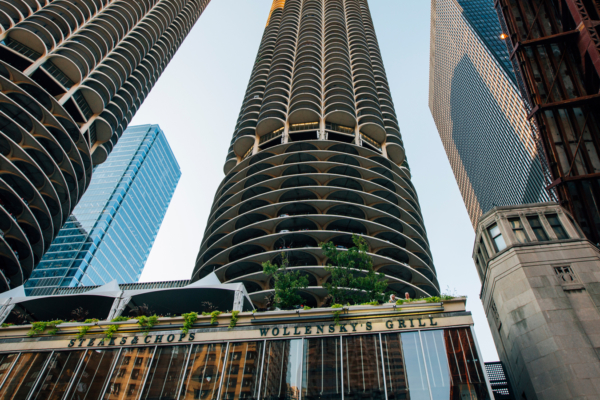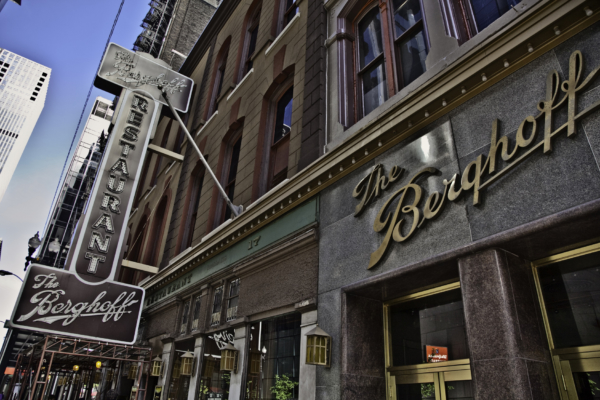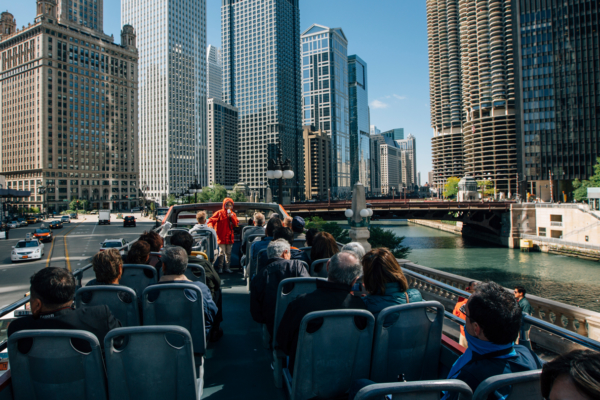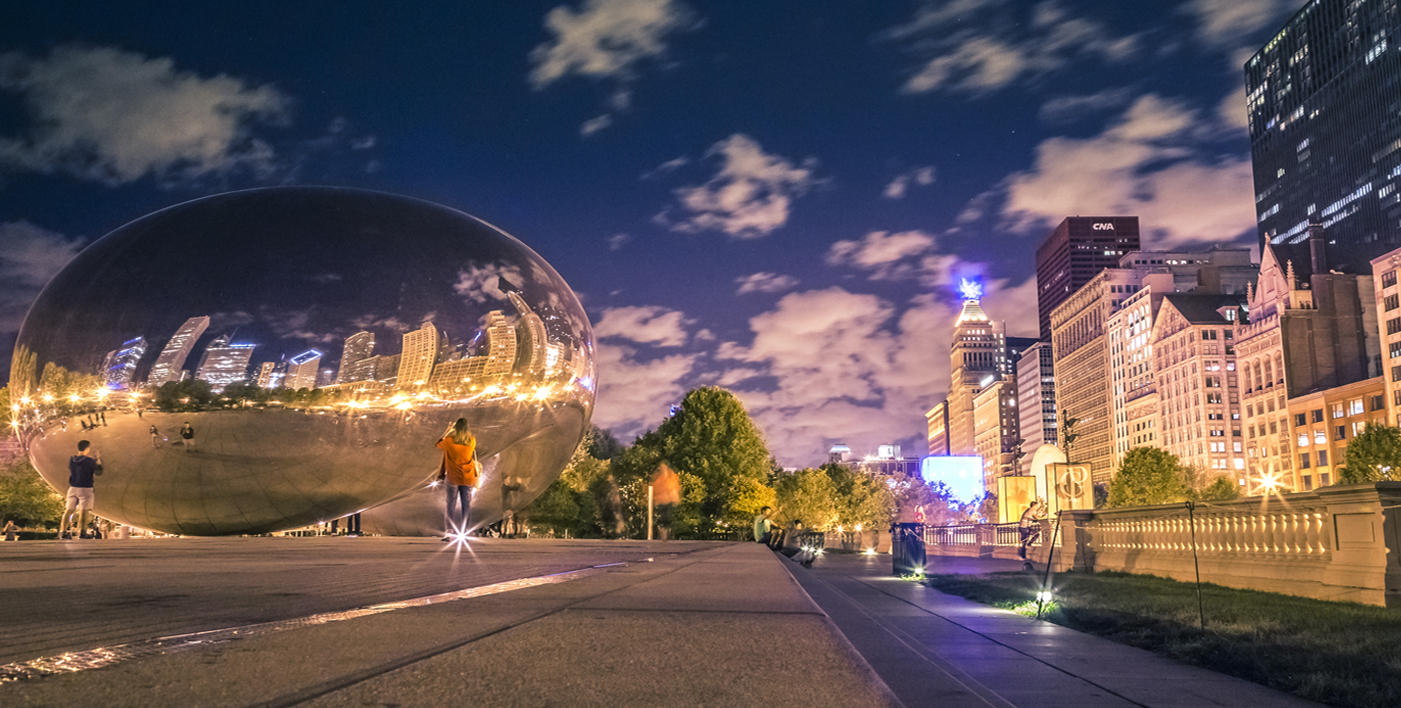Chicago theatres are full of drama and beauty — both on and off the stage. The stories of these historic theatres are just as fascinating as the tales the actors tell on stage, from a spot known for its association with a notorious gangster to a theatre taking up residence in a church.
Check out the fascinating history behind these historic Chicago theatres.
The Biograph Theater

The Biograph Theater was a Chicago movie house in the Lincoln Park neighborhood in 1914. It’s most famous as the place where John Dillinger, one of the most legendary bank robbers in American history, was shot and killed.
The year was 1934 and Dillinger, then known as Public Enemy No. 1, was seeing a movie at the Biograph. The FBI, tipped off to his location, was waiting outside after the show. A shootout began, ending with Dillinger being pronounced dead on July 22, 1934 at 10:40 p.m. The Biograph Theater remained a popular movie house for Chicagoans through the Depression and two World Wars before closing in the 1970s. The theatre is also on the National Register of Historic Places and was designated a Chicago Landmark in 2001.
Chopin Theatre
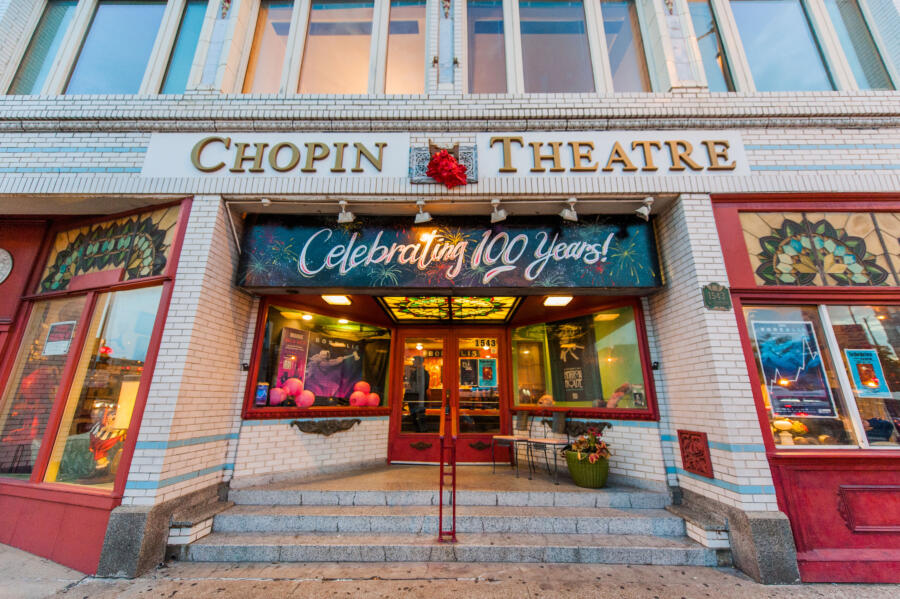
By the early 1900s, Chicago’s west side was home to a thriving Polish community. Many of these immigrants made their home near the “the Polish Triangle”, bordered by Division, Milwaukee, and Ashland. That’s where you could find the Chopin Theatre, a nickelodeon that opened in 1918 where you could see a movie for just 5 cents. Over the years, the building changed hands (and names) many times, with stints as a theatre, a savings and loan office, and even a bistro.
Zygmunt Dyrkacz, a Polish immigrant, was inspired by the neighborhood’s history and reopened the Chopin Theatre in 1990. The theatre, gradually restored to its original glory, has presented more than 120 of its own productions. There’s an emphasis on Eastern and Central European work, in an effort to stay true to the area’s roots. The venue’s three stages host more than 500 events each year, ranging from theatre to jazz to classic music, that have attracted more than one million guests.
Auditorium Theatre
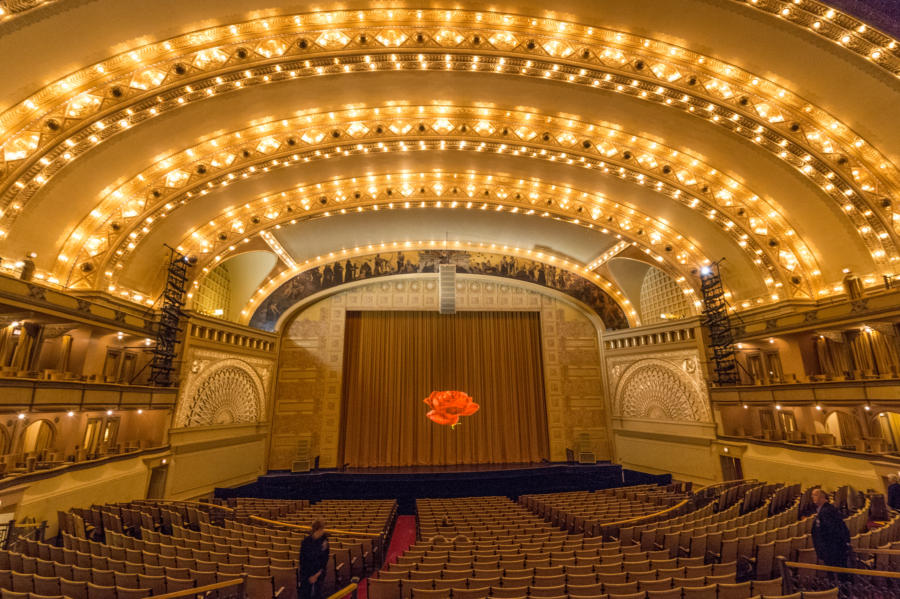
The stunning Auditorium Theatre, located in Chicago’s bustling South Loop neighborhood, is a National Historic Landmark that’s known around the world for its impeccable acoustics and innovative design.
The space was designed by the renowned Chicago architecture firm Adler and Sullivan and incorporated the latest advancements in modern technology, such as electric lighting and air conditioning. Extravagant design elements included dramatic gold-leaf arches, ornate gilded designs, and massive mosaics. When it opened in 1889, it was the city’s tallest building.
While it debuted to much fanfare and acclaim, the building eventually fell into a state of disrepair after the Great Depression and remained closed through the 1960s. Fortunately, a massive restoration project brought the space back to its former glory and led to the reopening of the theatre in 1967.
An immense range of notable figures have graced the Auditorium Theatre’s stage over the past 130 years, including Stevie Wonder, Ray Charles, The Beach Boys, Frank Sinatra, Itzhak Perlman, Isadora Duncan, Jimi Hendrix, Aretha Franklin, David Byrne, and so many more.
Today, the Auditorium Theatre presents a diverse array of programming, including local and national dance companies, touring bands and musicians, and international speakers.
The Second City
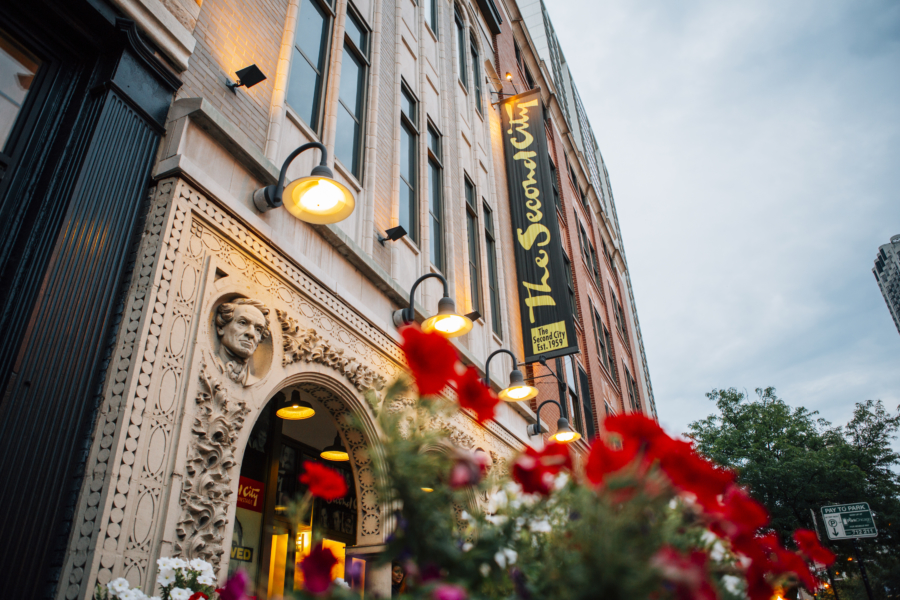
In 1959, a small group of comedians who called themselves The Second City opened the doors to their small cabaret theatre, debuting a new type of comedy called improv. The area, then nicknamed Piper’s Alley, was a funky, hippie hangout with eclectic shops and restaurants up and down the street.
The building’s facade comes from the demolished Schiller Theatre, a historic 17-story building that was built in 1892 as home for a German opera company. One striking feature of the building’s exterior are the four German face carved into the stone — opera composer Giacomo Meyerbeer, German novelist Fritz Reuter, philosopher Gotthold Ephraim Lessing, and the one and only Wolfgang Amadeus Mozart.
The Second City went on to revolutionize the industry and become one of the most prolific comedy empires in the world. They’re still the proud owners of their original space on Wells Street — with a few additions. The building now includes seven separate theaters (where you can see improv and sketch shows every night of the week), plus a Training Center, administrative offices, and the 1959 Kitchen and Bar.
Theater on the Lake
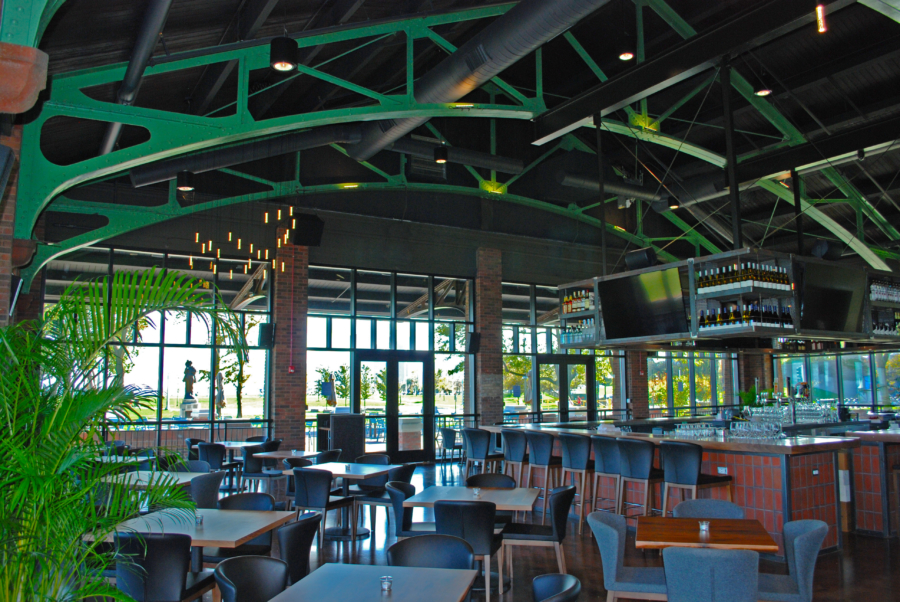
Built on the shores of Lake Michigan, this striking structure was originally designed as a sanitarium for children with tuberculosis. The idea was to get the kids away from the heavily polluted downtown and surround them with the fresh lake air. Opened in 1920, the sanitarium provided free healthcare for more than 30,000 children and infants for almost 20 years.
The building was praised for its modern design by Dwight H. Perkins, who also created nearby Café Brauer and the landmark Lion House at Lincoln Park Zoo. After the sanitarium closed in 1939, the space served as a recreational center for The United Service Organization during World War II.
In 1953, the Chicago Park District reopened the venue as Theater on the Lake. Over the years, the space degraded until it was almost unusable. In 2017, a $7 million restoration and redevelopment transformed the six-acre campus. The space is now home to an event space, where you can catch concerts, theatre productions, and other events, as well as a year-round restaurant with an outdoor patio that offers sweeping lake views.
Athenaeum Center
The Athenaeum opened in 1911, as part of the campus of nearby St. Alphonsus Catholic Church in Lakeview. At the time, the area was still being developed from its previous farmland roots and attracted large numbers of German, Polish, and Irish immigrants. The Athenaeum was intended as a neighborhood playhouse and opera house, complete with a gymnasium, a bowling alley, an assembly hall, and various meeting rooms.
Today, the Athenaeum is the oldest continuously operating off-Loop theater in Chicago. The space contains the gorgeous main-stage theatre, where you can catch everything from theatrical performances to stand-up comedy to live podcast recordings, plus three small studio theatre spaces. The theatre hosts performances for several local arts organizations, including Eclipse Theatre Company, Congo Square Theatre, Promethean Theatre Ensemble, Emerald City Theatre, Interrobang Theatre Project, and more.
TimeLine Theatre at Baird Hall
This intimate performance space is tucked into the second floor of Wellington Avenue United Church of Christ. The blueprints of the 110-year-old church called the space “assembly and Sunday School room”, but in the ’30s it was renamed Baird Hall and used as an event space.
In the 1960s, the church received a Community Arts Foundation grant to create a conversation between the arts and the church. The church brought in the Chicago City Players to produce avant-garde shows about various existential issues. Many members of the ensemble were also members of the church and the church’s minister often led post-show discussions on the performances’ major themes.
Over the years, many different theatre groups produced works in Baird Hall, including Chicago’s legendary Goat Island.
TimeLine Theatre Company has been the primary tenant of Baird Hall since 1999. The group is known for their interactive performance and uncanny ability to reconfigure their unconventional space in immersive and astonishing ways. Timeline is currently in the process of renovating their new performance space in the Uptown neighborhood, so catch them in Baird Hall while you still can!
Visit ChicagoPlays.com to see what exciting productions are on stage while you’re here. Plus, check out Hot Tix for half-price theatre tickets to shows in Chicago.

